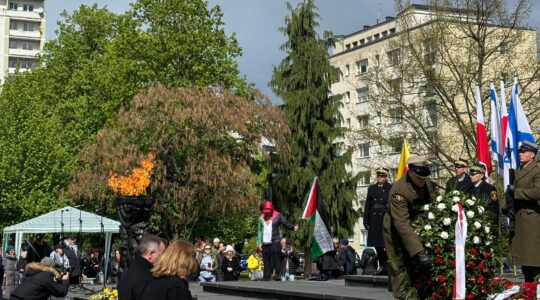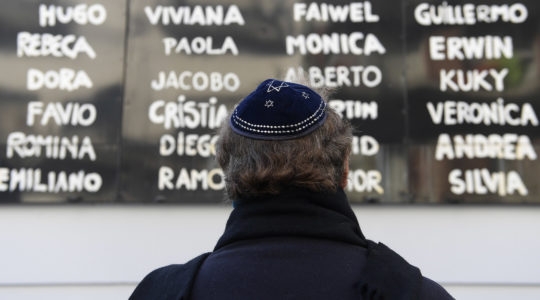BERLIN (JTA) — A discovery of modern sculptures hidden during the Nazi era has gone on display in Berlin.
Sculptures by artists whose works were publicly ridiculed by the Nazis were discovered earlier this year by workers excavating for a subway tunnel in Alexander Platz, in the former East Berlin, and are being shown briefly at the New Museum on Berlin’s Museum Island.
Nearly all the works have been identified, and researchers are trying to piece together how they came to be buried at the site, a New Museum spokesperson told JTA.
Some of the works’ artists fled Nazi Germany and others, particularly those who were not Jewish, survived the war years in an "internal exile," unable to work in Germany.
One sculptor, Otto Freundlich, died in 1943 in the Maidanek concentration camp in Nazi-occupied Poland. Another, Naum Slutsky, immigrated to England in 1933. Virtually all the artists who stayed were fired from their posts in German educational institutions during the Nazi years.
In 1937, works by these and other artists were confiscated and displayed in the Nazi propaganda exhibit in Munich of so-called "degenerate art." Afterwards, many of the works were considered lost.
The first rediscovery of the sculptures came last January, when work crews excavating wartime rubble from the cellar of a building at Königstrasse 50 unearthed an unusual metal object. Archaeologists accompanying the crew were expecting to find items from the Middle Ages, but it was a bust of actress Anni Mewes by Edwin Scharff.
Works by other artists were found in August. At the end of October, works by Slutzky and Gustav Heinrich Wolff, as well as an unidentified sculptor, were unearthed.
According to the museum, the sculptures had been removed at some point during the Third Reich from museums across Germany and placed in the Reich Ministry of Public Enlightenment and Propaganda in Berlin. They were then taken to the building on Königstrasse.
Tax adviser Erhard Oewerdieck and his wife, Charlotte, who both helped Jews during the war, lived in the building. Some of the art was found near Oewerdieck’s safe, suggesting that the couple might have tried to hide the works to protect them.





